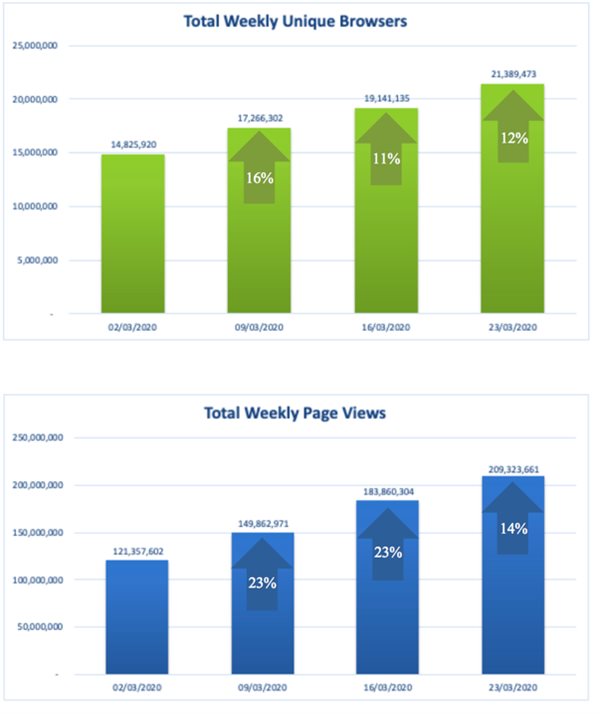Media consumption through the roof but not followed by adspend
The Advertising Media Forum (AMF) is a collective of media agencies and individuals including media strategists, planners, buyers and consultants through whom 95% of all media expenditure in South Africa is bought. This gives the AMF a fair vantage point to give perspective on what advertisers, agencies and media owners have faced during the Covid-19 crisis.
Media has been in a fortunate position in comparison with other industries during this crisis. Whilst many industries faced the wrath of a curveball wipeout in supply and demand, the media industry saw a surge on fronts. For a start, content production was considered an essential service during lockdown and therefore supply has remained consistent, albeit full scale entertainment genre production was limited.
In addition, the consumption of media went through the roof as everyone stayed at home. This dynamic gave individuals and families a few choices in terms of how and where to spend time consuming media. This, in turn, shaped key consumption trends. TV and digital saw the largest growth during this time, whereas platforms like outdoor, radio and print took serious hits due to the regulation and saw many players in the market close shop.
Ironically, digital and TV saw the biggest rise in consumption but their revenues declined as advertiser cash flow started drying up due to their supply and demand coming to a halt and many marketers being unsure around where to prioritise investment in media during the crisis as well as what to communicate. This has resulted in a steep decline of advertising spend by more than 35% in April vs March. The below chart, which shows Facebook real-time bidding metric CPM of 2020 compared to 2019 over the same period, highlights the intensity of the decline in advertising demand in South Africa.
Each medium experienced repercussion as a result of Covid-19, which are explored in slightly more granular detail below.
We saw print adspend decline by 60% in April vs March which smashed many publishers’ hope for a resurgence, as this medium has been declining for years. This resulted in closure of Associated Media Publishing, which published Cosmopolitan, House & Leisure, Good Housekeeping and Women on Wheels. Associated Media Publishing, which had been in the business for the last 38 years, could not survive the crisis. Similar impacts were seen on Habitat Media and Caxton, which closed down its magazine publishing division.
Cinema
Here the adspend came to a complete halt and one of the largest cinema chains Ster Kinekor retrenched all staff until cinemas can reopen.
Outdoor (OOH)
Billboards advertising in April reduced by 60% as we saw the impact of lockdown regulation hitting the outdoor industry. Yet outdoor presents a slight paradox in that it faced lower visibility as people stayed home but at the same time, remained a great medium to communicate key health and safety messaging within communities. As the lockdown eases, we are observing an increase in mobility and, accordingly, visibility of sites is increasing again. However, as in the case of print and cinema, a few smaller OOH media houses could not survive and had to close down.
Television
TV ratings have gone through the roof. Time spent viewing during lock down almost doubled but yet adspend declined by 27% between April and March.
Digital
As data on digital adspend is not published in the public domain, it is valuable to look at the bidding platform to gauge the benchmark. It is also helpful to look to the IAB Narrative Digital Report, which tracks digital activity in South Africa. Reviewing these sources, we see that digital audiences grew substantially on sites with news portals showing the most significant growth.
During the month of March, the news category of sites experienced a 44% increase in unique browsers and an increase of 72% in page views.
Looking at the bidding CPM of social sites it is clear that the CPM rate halved in comparison with February CPM data.
Overall, as highlighted at the start, the entire media industry will face significant challenges to clear the hurdles that Covid-19 has added to the daily race of business. Some global studies go as far as to suggest that the industry will shrink by 20% in comparison to last year. This will be a big blow to the books. Some businesses will close down and even if they survive, there will be massive retrenchment. We are seeing big agency holding groups take severe cost containment measures through hire freezes, salary cuts and retrenchments to survive.
As the AMF, we stand in solidarity with our colleagues in our media and advertising industry that has been impacted by this steep new reality. It is our focus to continue to further strengthen our agenda of transformation and a non-biased research landscape in our country and to create accountable environments of media investment, from which corporates can minimise the impact of Covid-19 on their respective industries.
About the AMF
The Advertising Media Forum (AMF) is a collective of media agencies and individuals including media strategists, planners, buyers and consultants through whom 95% of all media expenditure in South Africa is bought. The AMF advises and represents relevant organisations and aims to create open channels of communication and encourage and support transparent policies, strategies and transactions within the industry.
For more information on the AMF, visit amf.org.za.
- ComStrat - The bridge between brand strategy and media strategy17 Nov 11:59
- Connected media: The next frontier in South African media planning04 Nov 10:09
- People before process: How strategic empathy builds high-performance teams30 Sep 09:03
- The cost of data11 Aug 13:00
- The cost of efficiency on quality30 Jul 16:07


























